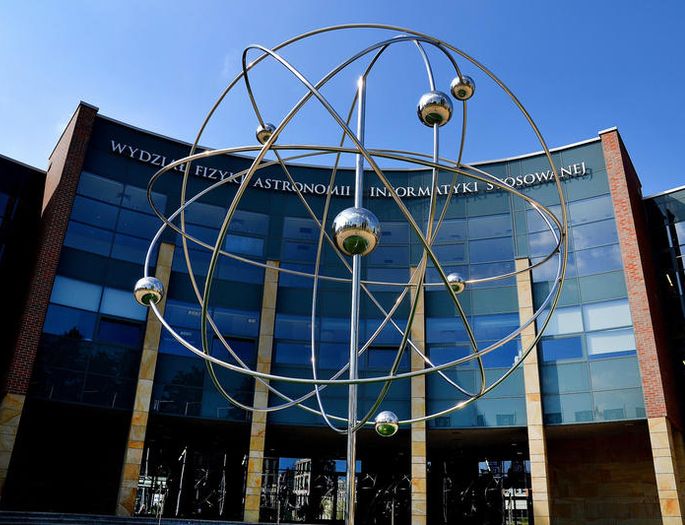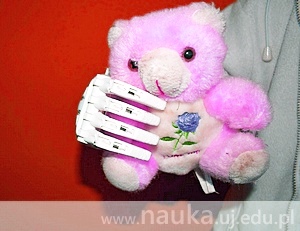
Dr Krzysztof Grandys, a specialist in anaesthesiology and intensive care from the University Children’s Hospital of Kraków, creates hand prostheses using a 3D printer. We asked him to tell us more about the ways in which technological advancement improves the quality of life for people with disabilities.
Kinga Mieszaniec-Nowak, JU Press Office: How did an anaesthesiologist become a 3D printer operator? From what I’ve gathered, you’ve always had a knack for technology, but how exactly did it happen?
Dr Krzysztof Grandys: Well, before I graduated in medicine, I studied at the Faculty of Automatic Control and Computer Science of the Silesian University of Technology. I’ve got an MSc in electronic engineering and I specialise in medical devices. It all started when I read an article about 3D printers in a technical journal many years ago. And so fairly recently, when I got an award for my 25th anniversary of working in the hospital, I thought I’d give myself a gift and buy one.
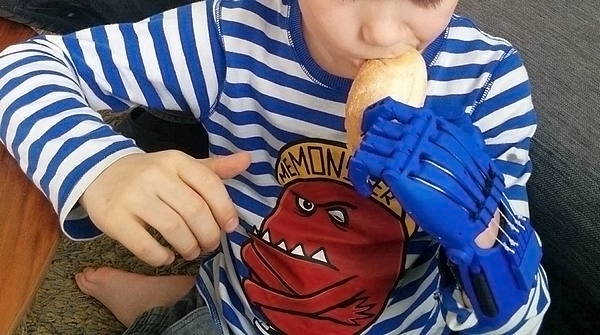 And then?
And then?
I tried printing a few things to test its capabilities. Toys and such, mostly. But I also found two prosthesis models: the Japanese HACKberry, which cost about 300–500 dollars to print, and one by e-Nable, which cost 100 PLN (around 25 dollars). A staggering difference, isn’t it? I thought to myself: ‘Why not try printing something like that?’. It first, I wasn’t all that successful.
I kept improving, reading, searching… until I found out more about e-Nable, a charity made up of volunteers which prints customised prostheses for those that can’t afford them. Through another charity, I came into contact with a mother from Bydgoszcz (northern Poland) and sent her a prosthesis I printed for her son. He was very keen to use it. Soon I had to print him another, bigger one. After a while, his mother asked me to make a prosthesis for her son’s friend, and that’s how the word got out. The charity helped me to find more people that needed prostheses and before I knew it, I’ve made about 40 of them.
Therapy, fun, even sports
Let’s talk about the prostheses themselves. How do they work?
An e-Nable hand is made of plastic. Naturally, it isn’t as strong or agile as a healthy human hand, but it definitely helps in picking up small, light objects. It’s a bit bigger than a natural hand. You fasten it to your arm. Currently, printed 3D prostheses are not regulated and approved by any organisation, and so they don't have official medical certificates. However, the charity and the movement behind it have been guided by bioengineering, orthopaedics and physiotherapy professionals since their inception. A prosthesis can assist in therapy, but also improve the patient’s self-esteem. Children with missing limbs often hunch, shrink themselves, try to hide their defects. A prosthesis helps to remedy that, at the same time improving their quality of life and reducing their dependence on others.
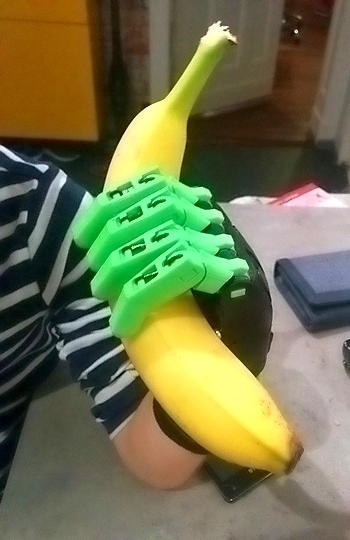 You print the prostheses for free. Who are they for?
You print the prostheses for free. Who are they for?
Basically anyone with missing fingers, hands or even forearms, but no further than the elbow joint. In order to open and close the hand, the patient has to be able to move their wrist or elbow. The grip isn’t too strong, and the fingers don’t move independently from one another. It works best for children above 3 or 4, since younger ones could end up swallowing some of the small parts that make up the hand. Indeed, children are always very grateful for the prostheses; they often care more about their appearance and colour and less about their functionality.
Can children hold toys with these hands?
Sure, some of the kids can even build things from Lego blocks.
And how does a hand like that aid in physical therapy?
Physical therapists are often reluctant to work with e-Nable hands, because they’re uncertified. I completely understand that. But it is possible to develop an exercise routine for patients to perform on their own or in a therapist’s office. One of the children we helped, Ola, is a great example of that. She’s an extraordinary girl, a swimmer; she has won a lot of medals in sports competitions for the disabled. Her defect is in the metacarpus area. She has missing fingers, so she has trouble lifting dumbbells. But thanks to our hand, she can hold a plastic water bottle and use it instead. Her coach came up with that.
I understand that learning to use a prosthetic hand requires a lot of patience.
Indeed. You can try to catch something thirty times and fail every single one. Additionally, a limb with a defect is a weaker limb. So it does require a great amount of work.
We can help more
You mentioned that you’ve helped 40 people.
Yes, and now we’re probably going to work with several adults. We’re ‘branching out’, and so we need more people, including a professional 3D designer and a physical therapist. We’re talking volunteer work here, of course, because that’s the model that e-Nable has adopted. We’re also in need of an office. Up until now, I’ve been doing everything at home, and let’s just say that I don’t look forward to my electricity bill.
Tell us more about e-Nable.
e-Nable Community Foundation is an international network of volunteers and philanthropists who give their time, skills and money to print free prostheses for people that need them, but don’t have the money. The organisation was founded in 2012 by Jon Schull and Ivan and Jen Owen. Since then, the charity has been developing very rapidly. It operates in many countries around the world. I opened the Polish branch when I started working with e-Nable in September 2016. We’re not a business, we give everything for free. We don’t receive any salary. There are several of us in Poland. We do everything by ourselves; from meeting with patients to designing and printing prostheses as well as delivering them. We collaborate with several companies that provide 3D printing services. Whenever possible, we also like to contact the school which the receivers of our prostheses attend.
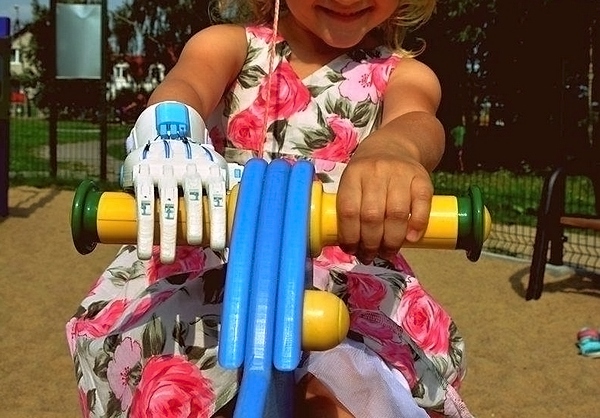 Why?
Why?
We know that engaging local community works very well in America. People are able to see who they’re helping and the positive impact that they make. At the moment, the Catholic High School in Tarnobrzeg (south-eastern Poland) is working on printing a prosthesis for their student. It should be ready in a couple of days. I’m also discussing the same issue with a school in Częstochowa (southern Poland), but it’ll have to wait, since the potential receiver is a little too young.
What are your plans for the near future?
We’d like to start collaborating with the Polish Society of Orthopaedics and Prosthodontics to clear any doubts expressed by businesses that sell prostheses. We’re invited to deliver a presentation to physical therapists, doctors and bioengineers at the University of Technology and Life Sciences in Bydgoszcz. We’d like to recruit more people, we’d also like to find sponsors. We’re planning to buy a 3D scanner. Slowly but steadily, we’re also increasing the number of prosthesis designs available for our patients.
Interestingly enough, lately we’ve noticed a spike in the number of adults interested in our hands. But the legal issues are still unresolved. Simply put, law is struggling to catch up with technology and information and their availability to amateurs. About ten people are currently waiting for our prostheses. We’re working as fast as we can, but as usual, there’s not enough hours in a day.
Photographs: Dr Krzysztof Grandys
Original text: www.nauka.uj.edu.pl





